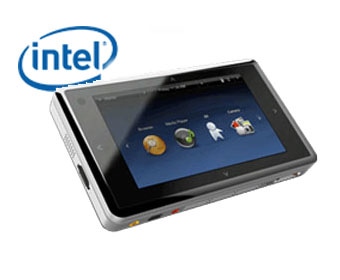Obviously not content with letting Qualcomm corner the market on vague sounding ultra mobile device niches, Nokia has hooked up with Intel to "define a new mobile platform beyond today's smartphones, notebooks and netbooks".
June 24, 2009

Obviously not content with letting Qualcomm corner the market on vague- sounding, ultra-mobile device niches, Nokia has hooked up with Intel to “define a new mobile platform beyond today’s smartphones, notebooks and netbooks”.
As part of a long-term courtship, Intel and Nokia will seek to develop a new class of mobile computing device and chipset architectures which will combine performance with mobile broadband connectivity in a user-friendly ‘pocketable’ form factor, the firms said.
So far, so vague. “With the convergence of the internet and mobility as the team’s only barrier, I can only imagine the innovation that will come out of our unique relationship with Nokia. The possibilities are endless,” was all Anand Chandrasekher, Intel’s senior vice president and general manager of the Ultra Mobility Group, had to say.
Last month, US chip shop Qualcomm claimed to have hit upon the next big thing by creating a whole new category of device that falls between the high end smartphone and the netbook. The “smartbook” as senior vice president of marketing and product development at Qualcomm, Luis Pineda, dubbed the device type, promises “the smartphone experience in a larger form factor.”
At the time, telecoms.com was struggling to understand that one – it all sounded a bit too much like Palm’s ill-fated Foleo strategy. There is a wide range of netbooks available for under the £300 mark, many of which boast a full fledged operating system like Linux or Windows XP, integrated wifi and 3G, and a highly portable form factor. As a result, the opportunities for a ‘smartbook’ look doubtful.
But for the Nokia and Intel partnership, naturally, Linux will be the glue that holds the effort together. Both companies have their own in house Linux projects running – Intel with Moblin and Nokia with Maemo – and will align their respective strategies around a number of key open source technologies such as oFono, ConnMan, Mozilla, X.Org, BlueZ, D-BUS, Tracker, GStreamer, and PulseAudio.
As part of the deal Intel will also licence Nokia’s HSPA 3G modem technologies to complement its own mobility platforms.
The US chip firm has been stepping up its game in the mobile space recently. Earlier this month it announced the acquisition of mobile and embedded devices software firm Wind River for $884m.
Wind River, also based in the US, makes operating systems and middleware for a variety of embedded systems from in-car computers to the Mars rovers, by way of traffic light systems and mobile phones. The company is best known for its VxWorks real time OS and its commercial grade Linux platforms.
About the Author(s)
You May Also Like








.png?width=300&auto=webp&quality=80&disable=upscale)


_1.jpg?width=300&auto=webp&quality=80&disable=upscale)


.png?width=800&auto=webp&quality=80&disable=upscale)